If you’re a passionate family history buff like us, everyone from your mother to your Great Aunt Sally knows that they can pawn off boxes of old family photos for you to peruse to your heart’s content.
Sifting through vintage photos can be a family historian’s dream, that is, until you find out that you just can’t seem to identify the time period in which certain photos were taken.
Much like how genealogical resources and classes are helpful to discovering and sharing your family story, knowing some photography history can also be beneficial when it comes to identifying origins of old photos.
The following common types of vintage photos, their photographic processes and characteristics could help you positively identify some of your long-lost ancestors.
Common 19th Century Vintage Photo Types
1. Daguerreotypes
The daguerreotype was created by Louis Jacques Mande Daguerre and is known by photography experts as the first practical form of photography. Daguerreotypes were produced on a thin copper metal support that had a polished coating of silver that was mirror-like. Daguerreotypes were sealed in glass for protection. In America, daguerreotypes were often placed in hinged, wooden cases with paper or leather coverings.
- Height of Popularity: 1839-1860
- Distinguishing Features: They can either take on the look of a negative or a positive depending on how the light hits them and the angle in which you’re viewing them. Also look for their highly-polished silver support.
Image shown here is a daguerreotype of Bernice Pauahi before marriage from 1849/50. Wikimedia Commons.
2. Salt Prints (Talbot’s Process)
In 1841, William Henry Fox Talbot patented the process of salt printing — the first photographic process that used sodium chloride to make photos more light-sensitive. Salt printing was also the first process to utilize both a negative and a positive allowing photographers to create prints of larger quantities.
- Height of Popularity: 1839-1860
- Distinguishing Features: This photo type can encounter serious fading problems, so if you find a very faded old photo coupled with a smooth yet dull surface, lack of fine detail and a silver image inside the actual fibers of the photo’s support paper, you could have a salt print on your hands.
Photo above is a salt print, possibly by Henry Fox Talbot, from 1843/47. Wikimedia Commons.
3. Albumen Prints
In 1850, Louis-Desire Blanquart Evrard improved upon Talbot’s salt prints by introducing albumen paper. Photographers would coat a thin sheet of paper with egg white which would hold light-sensitive silver salt on the surface of the paper, preventing image fading. Once it was dry, albumen prints were used just like salted-paper prints and the image would form by the darkening properties of the sun on the chemicals. Most of the surviving photographs from the 19th century are on albumen paper.
- Height of Popularity: 1855-1890
- Distinguishing Features: Albumen prints take on a rich, purple-brown hue. When you examine these photos, look for paper fibers through the albumen overlay. You can also usually see a fine lateral cracking across the glossy photo surface. The support is typically thin and also coated with albumen.
Photo above is an albumen print of an unidentified confederate Civil War soldier. Wikimedia Commons.
4. Carte de Visite (CDVs)
Albumen prints were often mounted on cardboard carte-de-viste (CDVs). Introduced in the 1850s in Paris, France by Andre Adolphe Eugene Disderi, CDVs were very popular in both the United States and Europe until the turn of the 20th century.
- Height of Popularity: 1860-1890
- Distinguishing Features: You can distinguish a CDV from other card mounts mostly by the size: 2.5 x 4 inches (63 x 100 mm) — or slightly less at times. Look also for the photographer’s imprint and the type of image itself (most CDVs are portraits). All of these characteristics can help you determine a correct date within just a few years of the photo’s origin.
Carte-de-visite above is of Sojourner Truth in 1864. Wikimedia Commons.
5. Ambrotypes
In 1854, the ambrotype became a popular photographic print method which used the wet-plate collodion process to create a positive photograph on glass. Each photo was unique and could not be duplicated — much like using a Polaroid camera.
- Height of Popularity: 1854-Mid 1860s
- Distinguishing Features: Look for dark purple, blue or red glass support. These photos may also be found presented on a mount with a case just like daguerreotypes. You can easily distinguish a daguerreotype from an ambrotype since ambrotypes always appear positive when viewing from any angle.
Ambrotype of a veteran of the Peninsular Wars and his wife, hand tinted. 1860s. Wikimedia Commons.
6. Tintypes
Introduced in 1856, the tintype — also known as a melainotype or ferrotype — was produced on a plate of thin metal. And just like the ambrotype and daguerreotype, the method didn’t use negatives and was directly exposed in the camera. Some small tintypes were also placed in cardboard mounts much like the CDV.
- Height of Popularity: 1856 – 1900
- Distinguishing Features: Look for a thin, metallic plate holding the positive image to distinguish a tintype from an ambrotype. Also try to look for mount plates that are brown or red. The most common size to look for is 2 ½ x 3 ½ inches.
Above image is a tintype of a family from 1880. Wikimedia Commons.
7. Cabinet Cards
Introduced in 1866, the cabinet card, like the CDV, was an albumen-coated, card-mounted photograph which was also quite popular in America until the 1890s.
- Height of Popularity: 1870 – 1890s
- Distinguishing Features: Look for card-mounted photos that are 4.25 x 6.5 inches (108 x 164 mm). Most are portraits and don’t include the name of the subject. An extensive logo can typically be found on the back of the card.
Woodburytype cabinet card of Annie Oakley. 1890s. Wikimedia Commons.
8. Hyalotype
Invented in the 1850s, hyalotypes were used in “Magic Lanterns” where their positive images on glass plates were projected onto screens. They were widely popular until modern slides came along in the 1950s.
- Height of Popularity: 1875-1950s
- Distinguishing Features: If you come across old family slides, just know that the most common size of a hyalotype is 192 mm x 83 mm. They were also always produced in black and white, yet some could be hand-tinted.
Hyalotype portrait of a man, c. 1855. Wikimedia Commons
This post was contributed by Crestleaf.
Have you come across any of these popular vintage photo types during your research? Let us know in the comments!
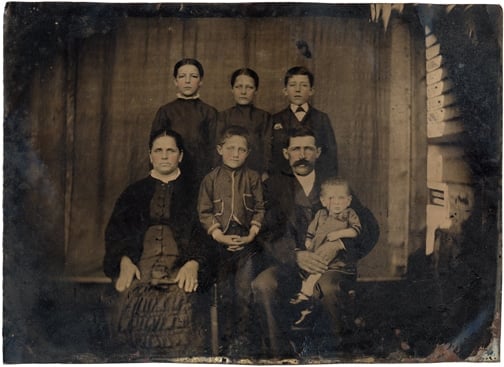
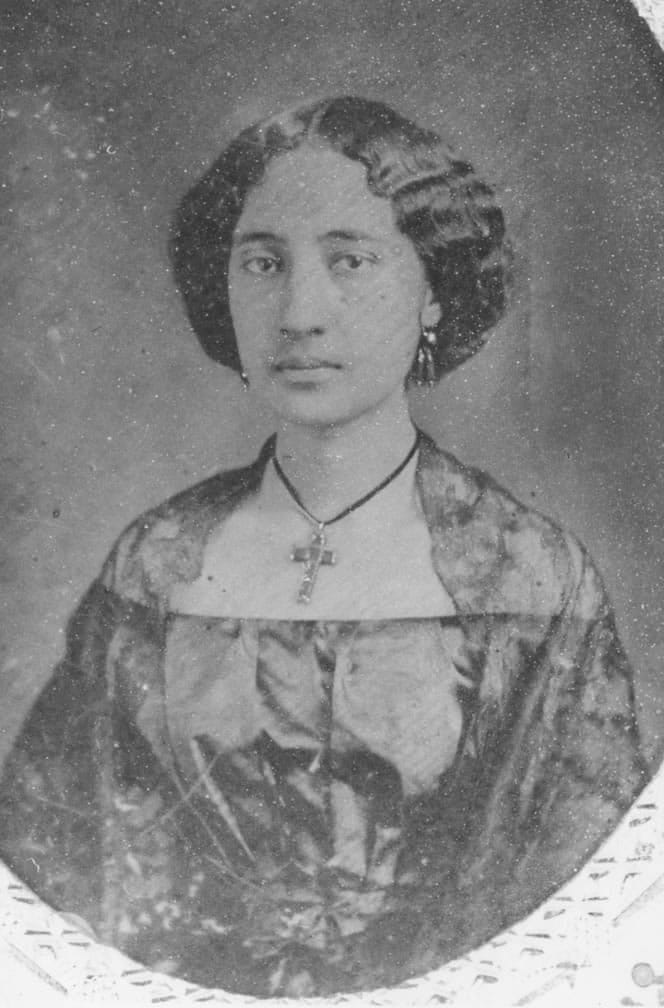
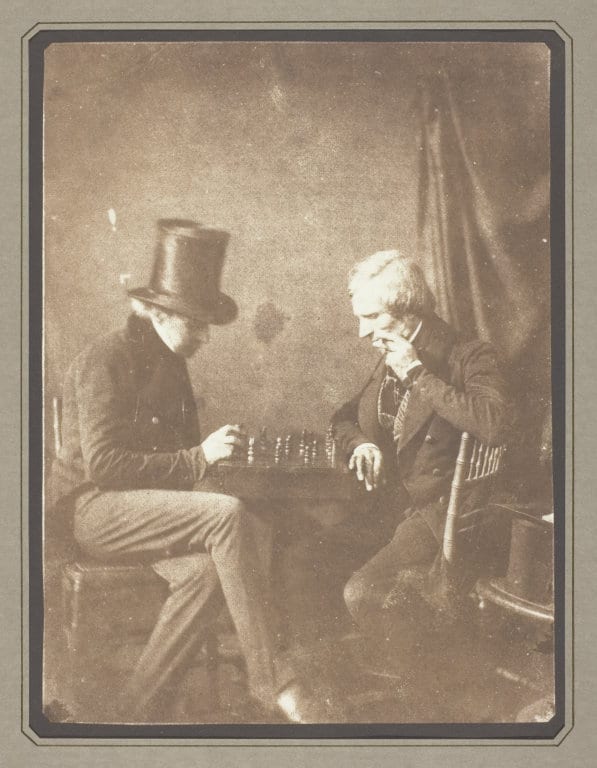
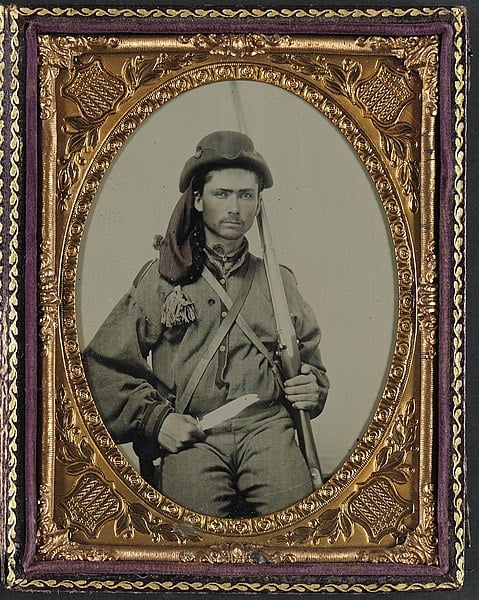
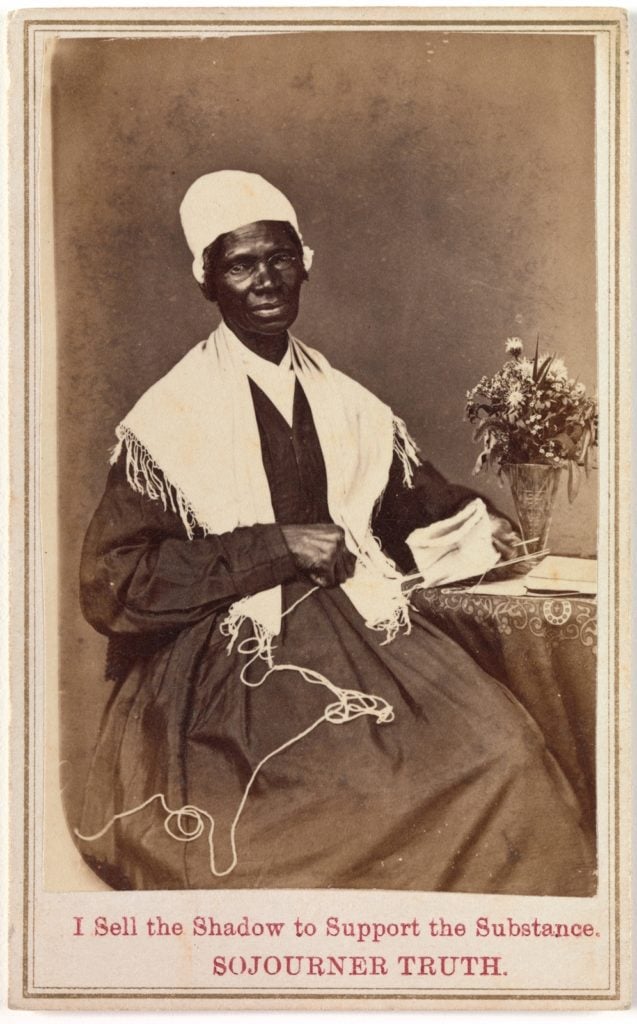
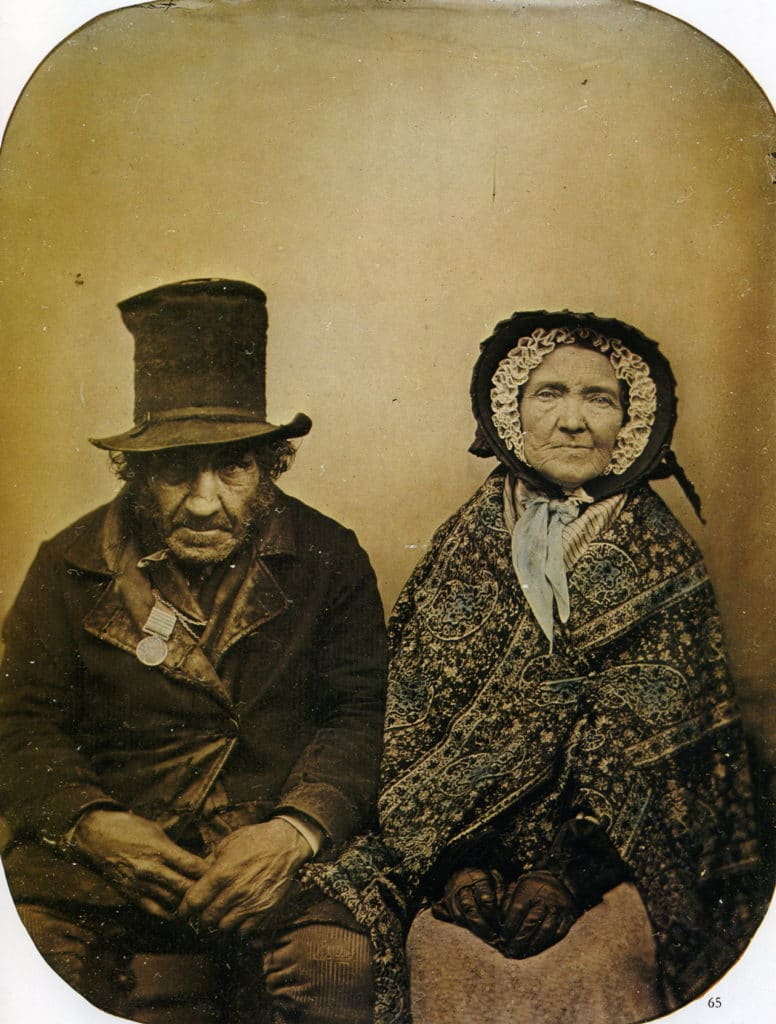
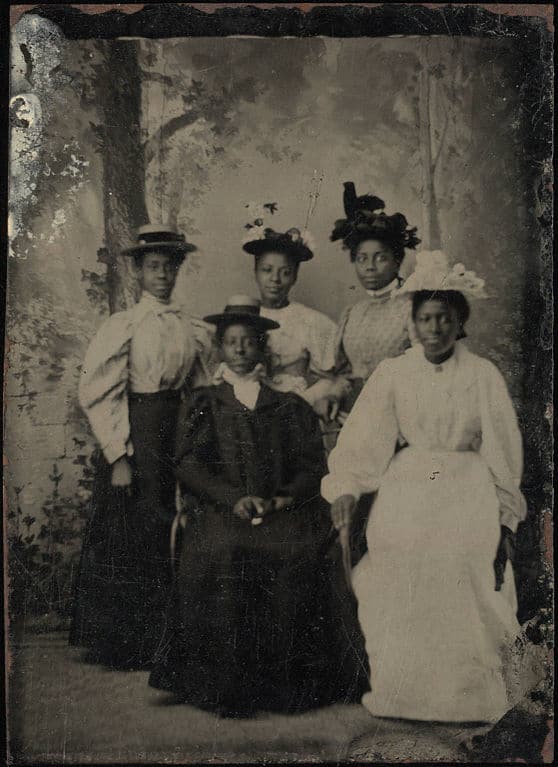

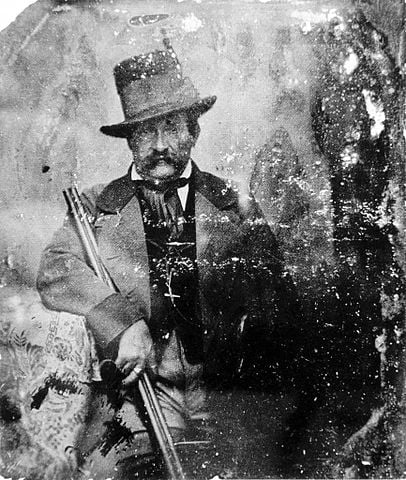
I have a box of family portraits that have been in my family for a long time and I don’t know who they are (I have a guess) but there are several different types of the same family throughout the years. This site helped me a lot! If you would be interested in seeing them, let me know.
i believe i have a large photograph of frank and jessee james would you be able to direct me to someone who could help me in determining if it is a authinic photograph of them i have looked through all the photos on them and this paticular photo isnt a known photo of them but i am 90% sure it is them in the picture by comparing it to other pictures on their webcite thank you
Can you identify type of photo/image that I’ve used on Ancestry? It is of an ancestor that died in 1825, picture date unkown. I have received comments on it stating it can’t be s photograph, which I have concluded, but would like to know more about it. Some say it is a photo of a painting.
I can email image for review.
I have 7 1850s glass Ambrotypes and 1 1840s daugarotype on silver, all are in wooden cases,
I found a picture of one of my ancestors from around 1900? The interesting part here is that it was transferred to a pillow case that looks to be around that time period as well. When did this process first come into being??? Would you like a picture to see what I’m talking about? Thank you.
Did you get any luck in finding history about John Burgess 1867, who might have built your cabin? Maybe go to a historian in that area.
You need to find a photo restoration specialist that have great references.
Nice! It would be great if commenters are allowed to post their old photos here as well, eh?
Back in 1974, I was involved in a photo class in high school printing sepia style prints and mounting them to cardboards. I think they are no longer available. At least the tools, materials and the training.
Contact a historian who does research on famous people back in the ‘cowboy era’.
We recently received two civil-war-era family photographs. They are quite large (over 14″,) mounted directly on linen, but they were stored rolled, and are now quite fragile. We are unsure how they might be conserved/preserved, though we’d like to see them mounted under glass, if we can find a way to safely unroll and mount them. Any suggestions?
I’m a photo restorer / re-creator, and found this article very helpful. Recently I took in an image that looked like a Daguerreotype except for three problems: the copper backing is relatively thick, the image has been tinted (quite well, really), and the surface seems more like a resin than glass. Any thoughts on what I’m dealing with? I’ll be happy to send pix if someone knowledgeable picks this up.
I have what I think is a tintype of my great grandmother. I estimate that it was taken between 1875 and 1885. How can I verify this?
Holly L.
Curious if you found any answers. I have a number of photos and I am not sure about the mountings. Mine have none. Some seem a partial Miz of actual charcoal drawing and a photo combined. I think those are the oldest of a large lot.
I believe I have a daguerrotype – small glass plate, looks positive or negative, depending on the angle I look at it. Glass in metal (copper?) frame inside a leather encased frame holder with velvet fiber to protect the glass. One of my relatives, but if it’s between 1840 and 1860, I’m at a loss about who it is.
Hello Lisa, I have the same type of photograph,,it looks like a drawing in Sepia. I believe it was most popular in 1880’s even though it started 1851 and went through to at least 1900. Let me know what you fund our. Nick
carte-de-viste is a typo in the middle of the page.
Hello 🙂 I believe I have a couple of old tintypes that might be photos of Billy the Kid. Do you know where I would go to get verification? Thanks!
I have a picture of my grandparents wedding. They are side by side and from the bust line up. The picture is on layered hard cardboard and has to be from the late 1880’s. Because my mother was the youngest of 8 and she was born in March of 1910. There are about 4 or 5 layers and one is white in the middle, and very hard and brittle now. I would really like any information you can give me, thanks
I recently came across a photo printed on what feel like a thin cardboard. the back of the photo looks like its all a sort of silk threading weaved together to give the photo a sturdy-ness. would love to know which years used this sort of paper?
the image is a sepia tone that almost looks like water color or chalk drawing, but it is very clearly a photograph/
A friend and I found an old photograph in some family items that had been in storage for years. My friend took the pic out of the frame to see if there was any identifying notes or anything written on the back. The photo turned out to be on glass, I’m assuming ambrotype, from what I just read in this article. The person in the photo is wearing his Civil War uniform and certain to be one of my ancestors. I have about 3 in my family that fought in that war. I’m trying to use other pictures and info to figure out exactly who it is.
Many of very old photos, we live in husband’s family farm of 200 yrs. Many of each type of photograph discribed
Hi I have recently found in our old family photos that have been passed down through the family a black and white photo made of cardboard its just a head and shoulder of a man and it has ‘black and white studios’ imprinted into the photo on the left hand side would be happy if anyone had idea how old this could be thank u to 4 taking the time to read this.
I have a box of old family photos, from early 1900 through 1960s. They are printed on, what seems like, hard plastic. Sort of heavy. What are these called and what is the best type of album to store them in?
Hi Benjamin, it sounds like a late 19th or early 20th century enlarged photograph, that has been overpainted or overdrawn. This was a very common technique at a time when enlargements were not of a very high quality, and details often became blurred and indistinct. Underneath, the photograph is almost certainly a silver gelatin print.
I’m a new subscriber as of today. I could not find a link to ask a new and separate question, (i.e. not a response to the above issue). So please excuse me if direct a question in this ‘Reply’ slot.
I inherited a panoramic oval photograph of my family’s original homestead (Iowa) which I believe, was taken around 1900. It is possibly plaster, though it IS a photograph and not a painting. It’s 14″x16″, convex and in it’s original wood frame. I found one similar, but smaller one like it, on ebay, which appears to be plaster. I originally believed it was simply filthy from a century of cigarette smokers. However, it seems like the actual picture was painted over with some kind of sealant like varnish. That ‘sealant’ is patchy & where there is ‘sealant,’ the substance is a bit brownish. Elsewhere, the photo is clear, but unprotected. I wish to clean it, as it is a wonderful photo of my family’s farm. Can you tell me what this photo is, what it’s called and how to clean it? My gmail is: cbrees2421. I’d deeply appreciate learning how to clean this, and I’m also eager about subscribing to such an interesting site. Thank you, Carol
Hello. I have an original portrait on canvas of my maternal great grandparents. My best guess is that it is circa 1880s in Mexico. It appears to be “touched” up with chalk and/or charcoal. They had the financial means to commission an artist to paint their portrait. Additionally, fact that the picture is not symmetrical (i.e., the tie is too large) makes me wonder if it is painting, instead of a picture. Any suggestions as to how I could determine the type or technique of the photo? Thanks.
I have written a comprehensive and free guide to dating early photographs, but it covers only cased images (up to 1870).
‘Fixed in Time’ is a guide to dating daguerreotypes, ambrotypes and tintypes by their mats and cases, for historians, genealogists, collectors and antique dealers. It is available as a free PDF or as a print-on-demand book.
‘Fixed in Time’ illustrates a thousand daguerreotype, ambrotype or tintype mat and case styles, each dated according to the years they were used. Some mats and cases were used for only a brief time, allowing you to date some early photographs to within a year. The dates provided are based on my own research, a five-year labor of love, where I located nearly 5,000 objectively dated early photographs.
You can get ‘Fixed in Time’ at
https://fixedintimebook.blogspot.com/
This book would not have been possible without the assistance of the many institutions, collectors and antique dealers who shared their expertise and their dated images, provided illustrations, and made many suggestions and corrections. Thank you, all.
– Sean William Nolan
Has anybody ever used this woman to date their photos? She’s got a few very well reviewed books on amazon, seems to know her stuff. http://www.jayneshrimpton.co.uk/
My husband and I are buying a log cabin on the lake front in Monticello, Ky. On the chimney outside at the top it says “John Burgess 1867. We have been told he built it. We have looked him up, but not much to be found. Any suggestions? We would like to know more about him.
I have a charcoal portrait of a man and woman. Have ancestors that came from Germany in 1881. It is probably 15 by 20 inches. The beard on the man looks as if it is the same as the actual portrait of my great great grandfather as an older man. Are their books or articles that tell you about clothing styles that might help date the picture?
What a great, concise and informative article — thanks a lot.
Hi Rose,
Great question. Here is an interesting guide on the topic. It may be a good place to start. http://www.metropostcard.com/guiderealphoto.html
How would you date post card pictures of family? I have several of these. One has the subjects standing on the back of a train.